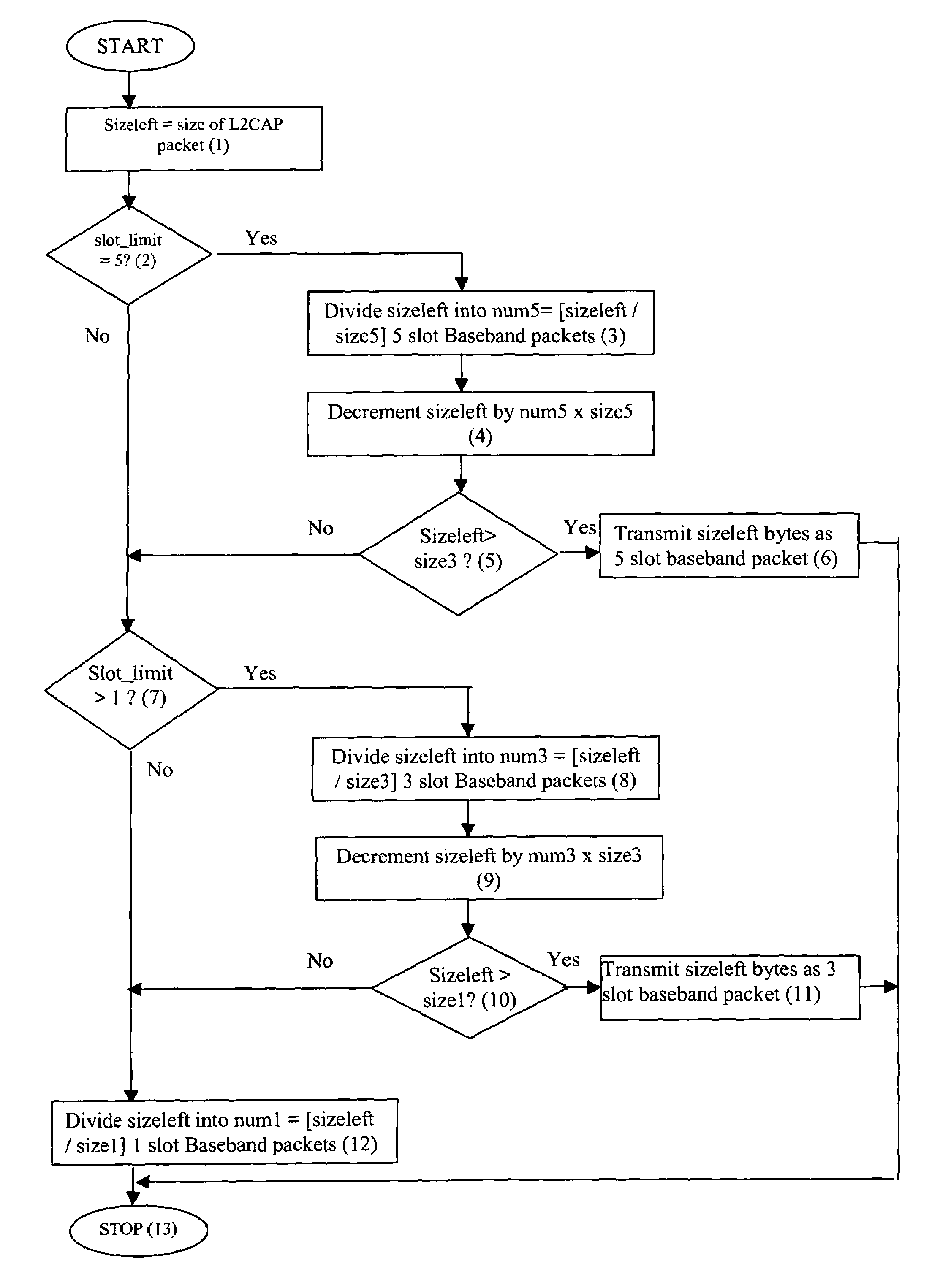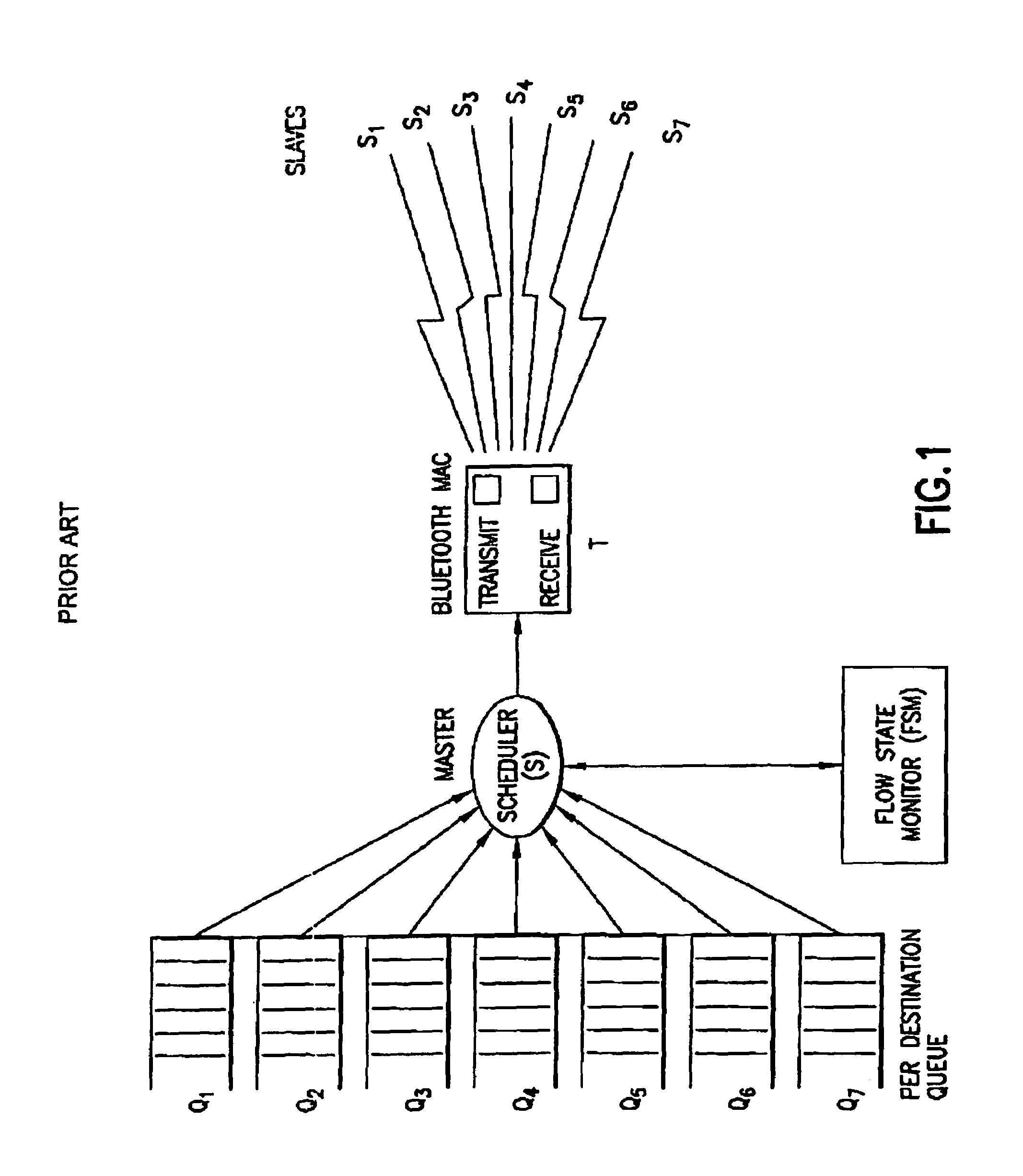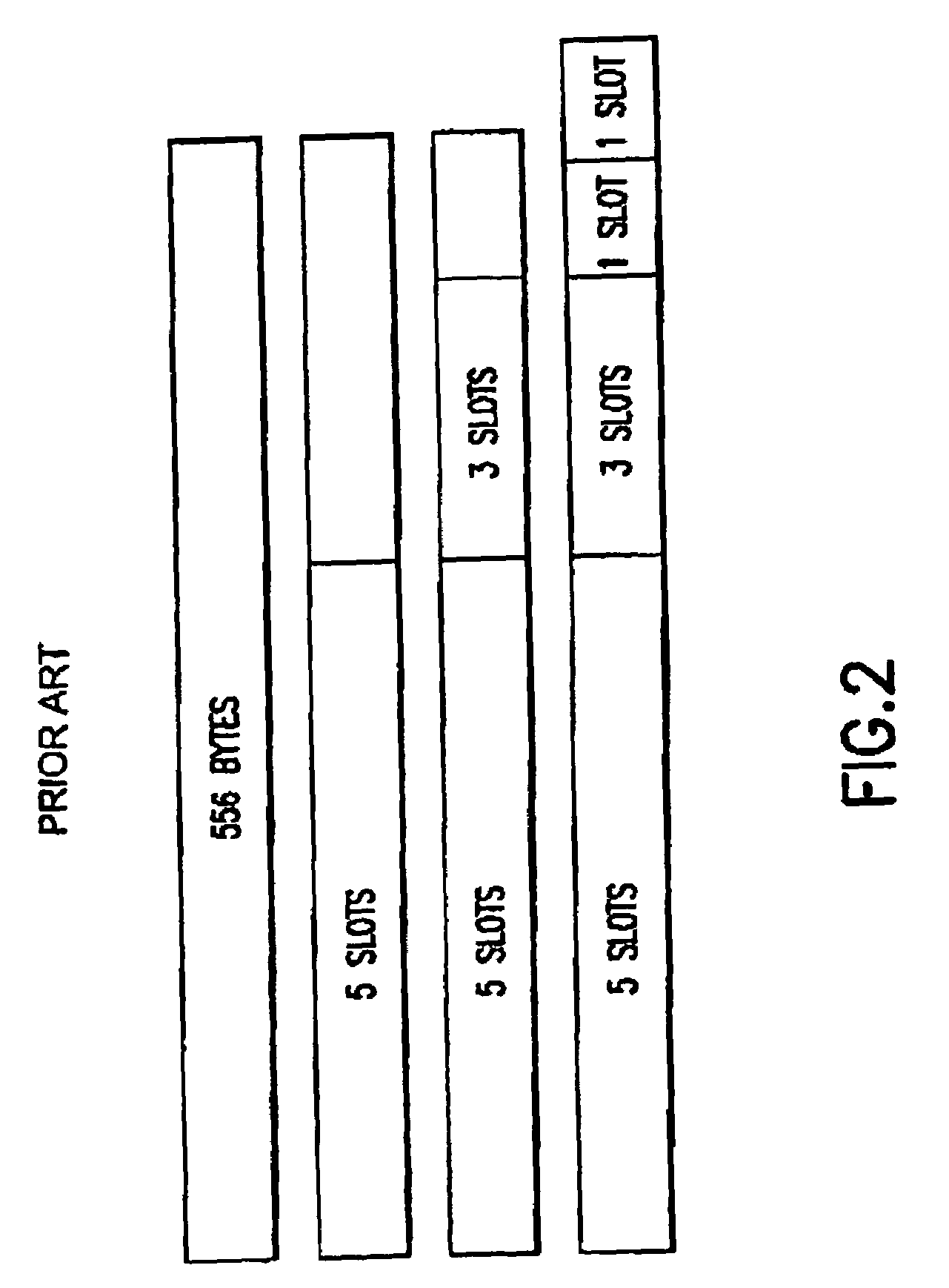Methodology for improving the performance of asynchronous data traffic over TDD/TDMA wireless networks
- Summary
- Abstract
- Description
- Claims
- Application Information
AI Technical Summary
Benefits of technology
Problems solved by technology
Method used
Image
Examples
Example
DETAILED DESCRIPTION OF THE DRAWINGS
[0056]FIG. 1 shows a typical master driven TDD / TDMA system such as a Bluetooth system. There exist per destination queues (Q1 to Q7) at the master. The Flow State Monitor (FSM) monitors the flow state of each queue and the scheduler (S) correspondingly polls the queue for transferring the baseband data packets to the transceiver (T). The baseband packets in each queue are created as a result of the segmentation process in the link layer.
[0057]The invention functions at two levels:[0058]1. Segmentation And Reassembly (SAR) in the Link layer for fragmenting large application data packets into the minimum number of smaller baseband packets.[0059]2. Medium Access Control (MAC) scheduling in the transmission of said baseband packets to achieve the following:[0060]a. optimal sharing of bandwidth[0061]b. high link utilization[0062]c. Low queue occupancy in baseband buffers
[0063]FIG. 2 shows an example of SAR of a 556 bytes Link layer packet for a Bluetoo...
PUM
 Login to view more
Login to view more Abstract
Description
Claims
Application Information
 Login to view more
Login to view more - R&D Engineer
- R&D Manager
- IP Professional
- Industry Leading Data Capabilities
- Powerful AI technology
- Patent DNA Extraction
Browse by: Latest US Patents, China's latest patents, Technical Efficacy Thesaurus, Application Domain, Technology Topic.
© 2024 PatSnap. All rights reserved.Legal|Privacy policy|Modern Slavery Act Transparency Statement|Sitemap



